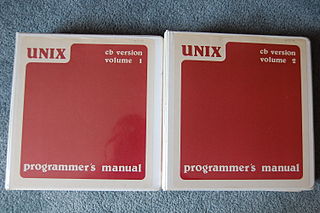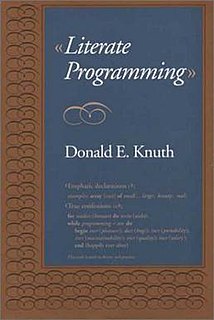VBdocman allows commenting and the automatic generation of technical documentation from Visual Basic 6 source code files.

Visual Basic is a third-generation event-driven programming language from Microsoft for its Component Object Model (COM) programming model first released in 1991 and declared legacy during 2008. Microsoft intended Visual Basic to be relatively easy to learn and use. Visual Basic was derived from BASIC and enables the rapid application development (RAD) of graphical user interface (GUI) applications, access to databases using Data Access Objects, Remote Data Objects, or ActiveX Data Objects, and creation of ActiveX controls and objects.
VBdocman parses the Visual Basic projects and automatically creates the table of contents, index, topics, cross-references and F1 context-sensitive help.

A table of contents, usually headed simply Contents and abbreviated informally as TOC, is a list, usually found on a page before the start of a written work, of its chapter or section titles or brief descriptions with their commencing page numbers.
An index is a list of words or phrases ('headings') and associated pointers ('locators') to where useful material relating to that heading can be found in a document or collection of documents. Examples are an index in the back matter of a book and an index that serves as a library catalog.
Context-sensitive help is a kind of online help that is obtained from a specific point in the state of the software, providing help for the situation that is associated with that state.
It can read Javadoc comments from the source code. VBdocman contains comment editor which helps writing comments. It is possible to insert pictures, links and other formatting directly into the source code.
Javadoc is a documentation generator created by Sun Microsystems for the Java language for generating API documentation in HTML format from Java source code. The HTML format is used for adding the convenience of being able to hyperlink related documents together.
In computing, source code is any collection of code, possibly with comments, written using a human-readable programming language, usually as plain text. The source code of a program is specially designed to facilitate the work of computer programmers, who specify the actions to be performed by a computer mostly by writing source code. The source code is often transformed by an assembler or compiler into binary machine code understood by the computer. The machine code might then be stored for execution at a later time. Alternatively, source code may be interpreted and thus immediately executed.
The format of output documentation is configurable. Predefined formats are HTML Help, WinHelp, HTML, RTF and XML.

Documentation is a set of documents provided on paper, or online, or on digital or analog media, such as audio tape or CDs. Examples are user guides, white papers, on-line help, quick-reference guides. It is becoming less common to see paper (hard-copy) documentation. Documentation is distributed via websites, software products, and other on-line applications.
Microsoft WinHelp is a proprietary format for online help files that can be displayed by the Microsoft Help browser winhelp.exe or winhlp32.exe. The file format is based on Rich Text Format (RTF). It remained a popular Help platform from Windows 3.0 platform through Windows XP. WinHelp was removed in Windows Vista purportedly to discourage software developers from using the obsolete format and encourage use of newer help formats.

Hypertext Markup Language (HTML) is the standard markup language for creating web pages and web applications. With Cascading Style Sheets (CSS) and JavaScript, it forms a triad of cornerstone technologies for the World Wide Web.
VBdocman has its successor VSdocman which supports VB .NET and C#.

VSdocman is a documentation generator that allows for code commenting and the automatic generation of technical documentation from C# and VB .NET projects. It is directly integrated in Visual Studio as an extension.

Visual Basic .NET (VB.NET) is a multi-paradigm, object-oriented programming language, implemented on the .NET Framework. Microsoft launched VB.NET in 2002 as the successor to its original Visual Basic language. Although the ".NET" portion of the name was dropped in 2005, this article uses "Visual Basic [.NET]" to refer to all Visual Basic languages released since 2002, in order to distinguish between them and the classic Visual Basic. Along with Visual C#, it is one of the two main languages targeting the .NET framework.

C# is a general-purpose, multi-paradigm programming language encompassing strong typing, lexically scoped, imperative, declarative, functional, generic, object-oriented (class-based), and component-oriented programming disciplines. It was developed around 2000 by Microsoft within its .NET initiative and later approved as a standard by Ecma (ECMA-334) and ISO. C# is one of the programming languages designed for the Common Language Infrastructure.

Literate programming is a programming paradigm introduced by Donald Knuth in which a program is given as an explanation of the program logic in a natural language, such as English, interspersed with snippets of macros and traditional source code, from which a compilable source code can be generated.
Software documentation is written text or illustration that accompanies computer software or is embedded in the source code. The documentation either explains how the software operates or how to use it, and may mean different things to people in different roles.
Visual Basic for Applications (VBA) is an implementation of Microsoft's event-driven programming language Visual Basic 6, which was discontinued in 2008, and its associated integrated development environment (IDE). Although Visual Basic is no longer supported or updated by Microsoft, the VBA programming language was upgraded in 2010 with the introduction of Visual Basic for Applications 7 in Microsoft Office applications.
CWEB is a computer programming system created by Donald Knuth and Silvio Levy as a follow-up to Knuth's WEB literate programming system, using the C programming language instead of Pascal.

Syntax highlighting is a feature of text editors that are used for programming, scripting, or markup languages, such as HTML. The feature displays text, especially source code, in different colors and fonts according to the category of terms. This feature facilitates writing in a structured language such as a programming language or a markup language as both structures and syntax errors are visually distinct. Highlighting does not affect the meaning of the text itself; it is intended only for human readers.
Doxygen is a documentation generator, a tool for writing software reference documentation. The documentation is written within code, and is thus relatively easy to keep up to date. Doxygen can cross reference documentation and code, so that the reader of a document can easily refer to the actual code.

Code folding is a feature of some text editors, source code editors, and IDEs that allows the user to selectively hide and display – "fold" – sections of a currently edited file as a part of routine edit operations. This allows the user to manage large amounts of text while viewing only those subsections of the text that are specifically relevant at any given time.
Intelligent code completion is a context-aware code completion feature in some programming environments that speeds up the process of coding applications by reducing typos and other common mistakes. Attempts to do this are usually done through auto completion popups when typing, querying parameters of functions, query hints related to syntax errors, etc. Intelligent code completion and related tools serve as documentation and disambiguation for variable names, functions and methods using reflection.
ROBODoc is a documentation tool similar to Javadoc and licensed under the GPL. It is used to extract API documentation from source code. It can be used with any language that supports comments and works by extracting specially formatted headers. These are then reformatted into HTML, DocBook, TROFF, ASCII, LaTeX, PDF, or RTF.
The following tables compare general and technical information for a number of documentation generators. Please see the individual products' articles for further information. Unless otherwise specified in footnotes, comparisons are based on the stable versions without any add-ons, extensions or external programs.
Ddoc is a compiler-embedded documentation generator and associated syntax, for the D programming language, designed by Walter Bright. Its emphasis is on being able to write documentation in code comments in a natural style, minimizing the need for embedded markup and thus improving the legibility of the code comments. It is similar in concept to Doxygen and Javadoc.

phpDocumentor is an open-source documentation generator written in PHP. It automatically parses PHP source code and produces readable API and source code documentation in a variety of formats. phpDocumentor generates documentation based on PHPDoc-formatted comments and the structure of the source code itself. It supports documentation of both object-oriented and procedural code. phpDocumentor can create documentation in HTML, PDF, CHM or Docbook formats. It can be used from the command line or via a web interface. It has support for linking between documentation, incorporating user level documents like tutorials, and creation of highlighted source code with cross referencing to PHP general documentation. phpDocumentor is able to parse all PHP syntax and supports PHP4 and PHP5, although legacy phpDocumentor 1.4.4 does not support all features of PHP 5.3. It is an open source project and is distributed under the terms of the GNU Lesser General Public License (LGPL).
Sandcastle is a documentation generator from Microsoft. It automatically produces MSDN-style code documentation out of reflection information of .NET assemblies and XML documentation comments found in the source code of these assemblies. It can also be used to produce user documentation from Microsoft Assistance Markup Language (MAML) with the same look and feel as reference documentation.

The Yahoo! User Interface Library (YUI) is a discontinued open-source JavaScript library for building richly interactive web applications using techniques such as Ajax, DHTML, and DOM scripting. YUI includes several core CSS resources. It is available under a BSD License. Development on YUI began in 2005 and Yahoo! properties such as My Yahoo! and the Yahoo! front page began using YUI in the summer of that year. YUI was released for public use in February 2006. It was actively developed by a core team of Yahoo! engineers.

In computer programming, a comment is a programmer-readable explanation or annotation in the source code of a computer program. They are added with the purpose of making the source code easier for humans to understand, and are generally ignored by compilers and interpreters. The syntax of comments in various programming languages varies considerably.
JSDoc is a markup language used to annotate JavaScript source code files. Using comments containing JSDoc, programmers can add documentation describing the application programming interface of the code they're creating. This is then processed, by various tools, to produce documentation in accessible formats like HTML and Rich Text Format. JSDoc is free software under the Apache License 2.0.

HelpNDoc is a Windows-based help authoring tool published by French company IBE Software.

PRADO is an open source, object-oriented, event-driven, component-based PHP web framework. PRADO's name is an acronym derived from "PHP Rapid Application Development Object-oriented".













